Bendigo Library Aquarium
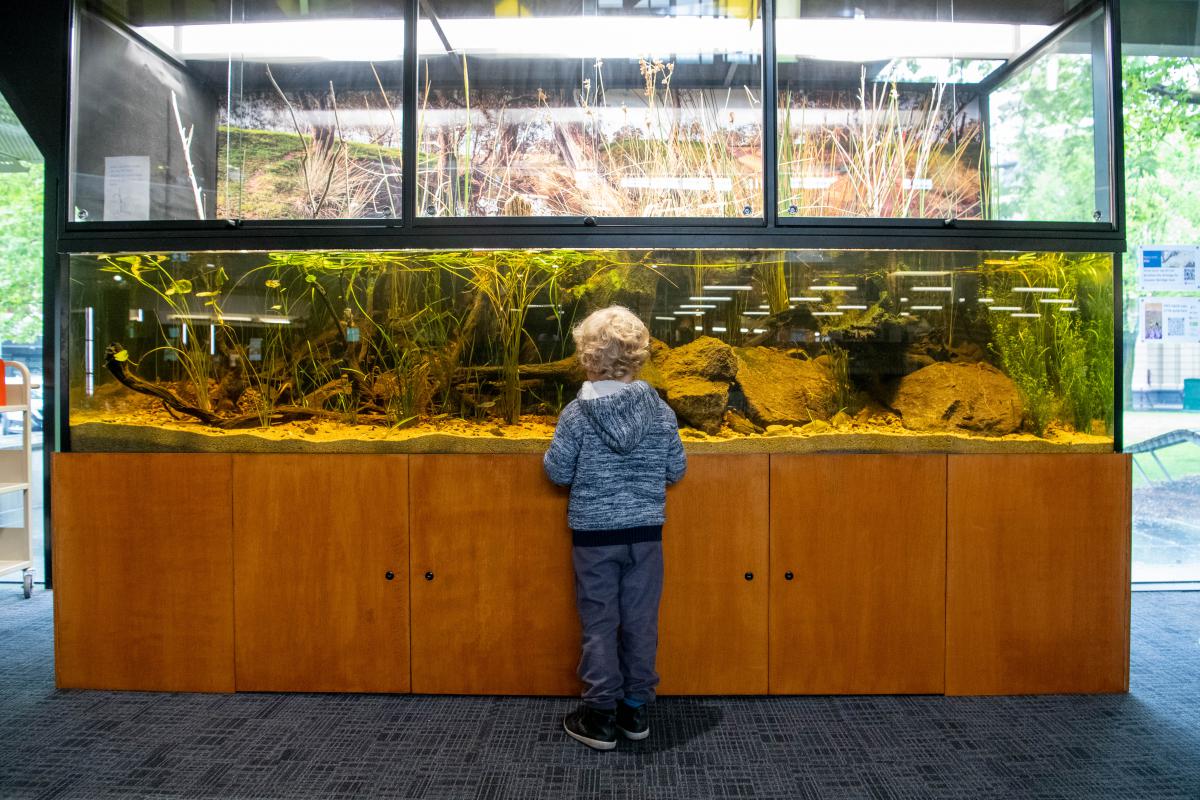
Bendigo Library is now home to a large native aquarium celebrating the Bendigo Creek.
The impressive aquarium is over three metres long and is home to a selection of small-bodied native fish and vegetation, including some that were previously extinct in the wild. You can read more about them below.
The aquarium builds on conservation efforts to rejuvenate the Creek and re-introduce native fish species that once populated the waters of our region. Currently, the tank is home to southern pygmy perch, Murray darling rainbowfish, southern purple-spotted gudgeon and Australian smelt. More fish will be introduced over time.
We invite you to come into Bendigo Library and have a look at our beautiful aquarium. Have a look beneath the Bendigo Creek and discover some of the little-known creatures that call it home.
How the aquarium story began…
The Parks and Open Space team at the City of Greater Bendigo (CoGB) have been conducting various rehabilitation projects along Bendigo Creek over several years and have recently reintroduced locally extinct fish and fauna including the southern pygmy perch which can be seen in the aquarium.
Mark Toohey, a staff member heavily involved in the work along Bendigo Creek, saw the interest from the community in learning more about the rehabilitation projects.
There was exciting work being done, and a keen interest from the community in knowing more. All that was needed, was the right location and means of sharing the stories.
Mark wrote a few lines in an email that made its way to Mark Hands, CEO at Goldfields Libraries. Luckily for us, the two Mark’s spoke a similar language. They have a shared passion for education, and a willingness to make things happen that might otherwise seem unattainable.
Within a few weeks, a grant application to the Central Victoria Libraries Endowment Program had been submitted, and a commitment made from Goldfields Libraries and City of Greater Bendigo to see the project through.
Together with CoGB and North Central Catchment Management Authority, Bendigo Library will facilitate educational programming and events to help share the story of Bendigo Creek rehabilitation projects and the ecosystem.
What’s in the aquarium?
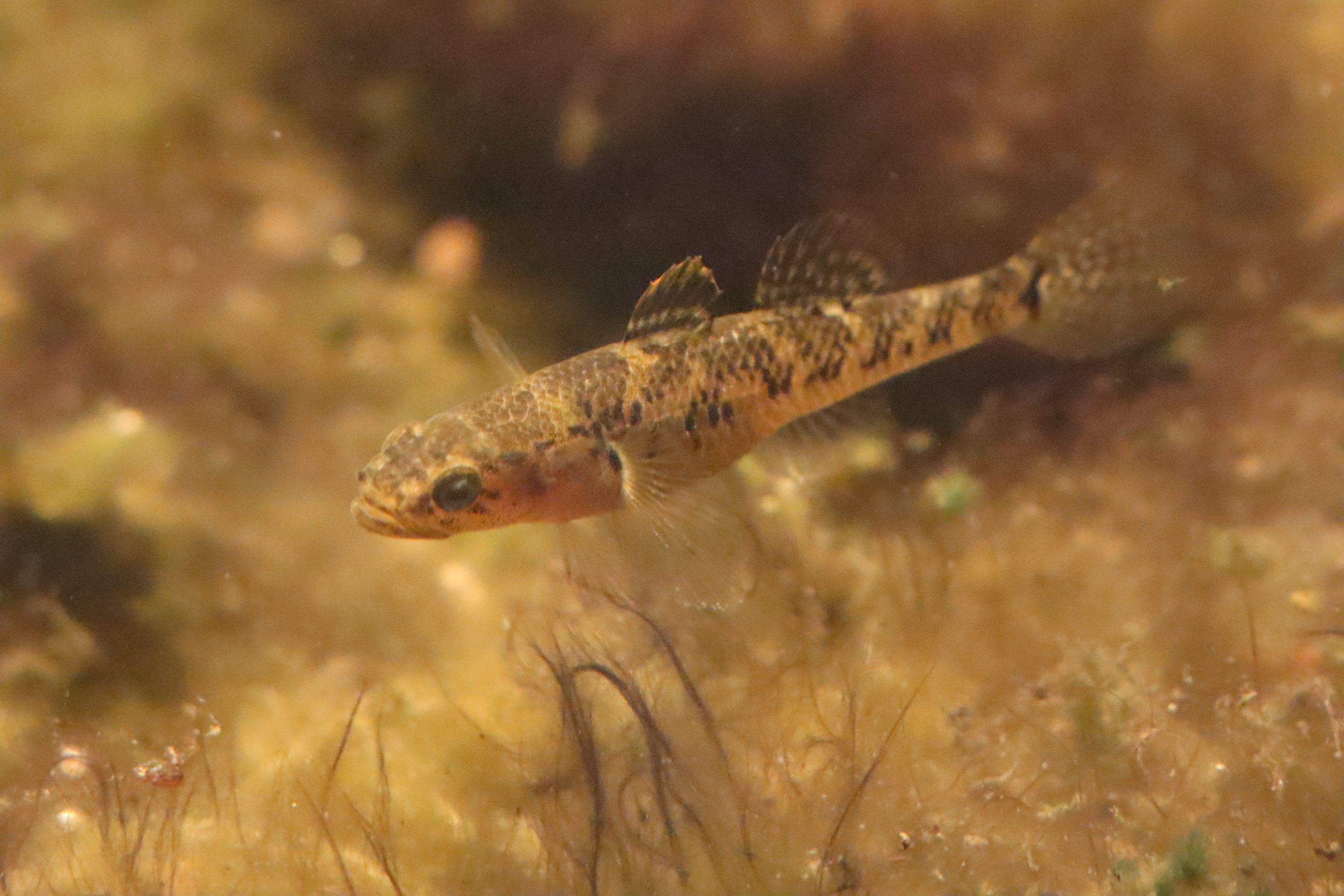
Dwarf Flathead Gudgeon
Philypnodon macrostomus
Dwarf Flathead Gudgeon are a small brown Gudgeon that only grows to about 6 cm.
They are found in estuaries and freshwater rivers from Baffle Creek in central Queensland through New South Wales and eastern Victoria to Wilsons Promontory. Inland, the range extends westward along the Murray River into South Australia. In the southern parts of its range, it is more restricted to estuarine habitats and is found further upstream in more northerly river drainages.
The Dwarf Flathead Gudgeon is commonly found alongside its larger relative, the Flathead Gudgeon, and often near some form of cover, such as submerged vegetation or rocks. Being carnivorous, they eat insects and minute crustaceans.
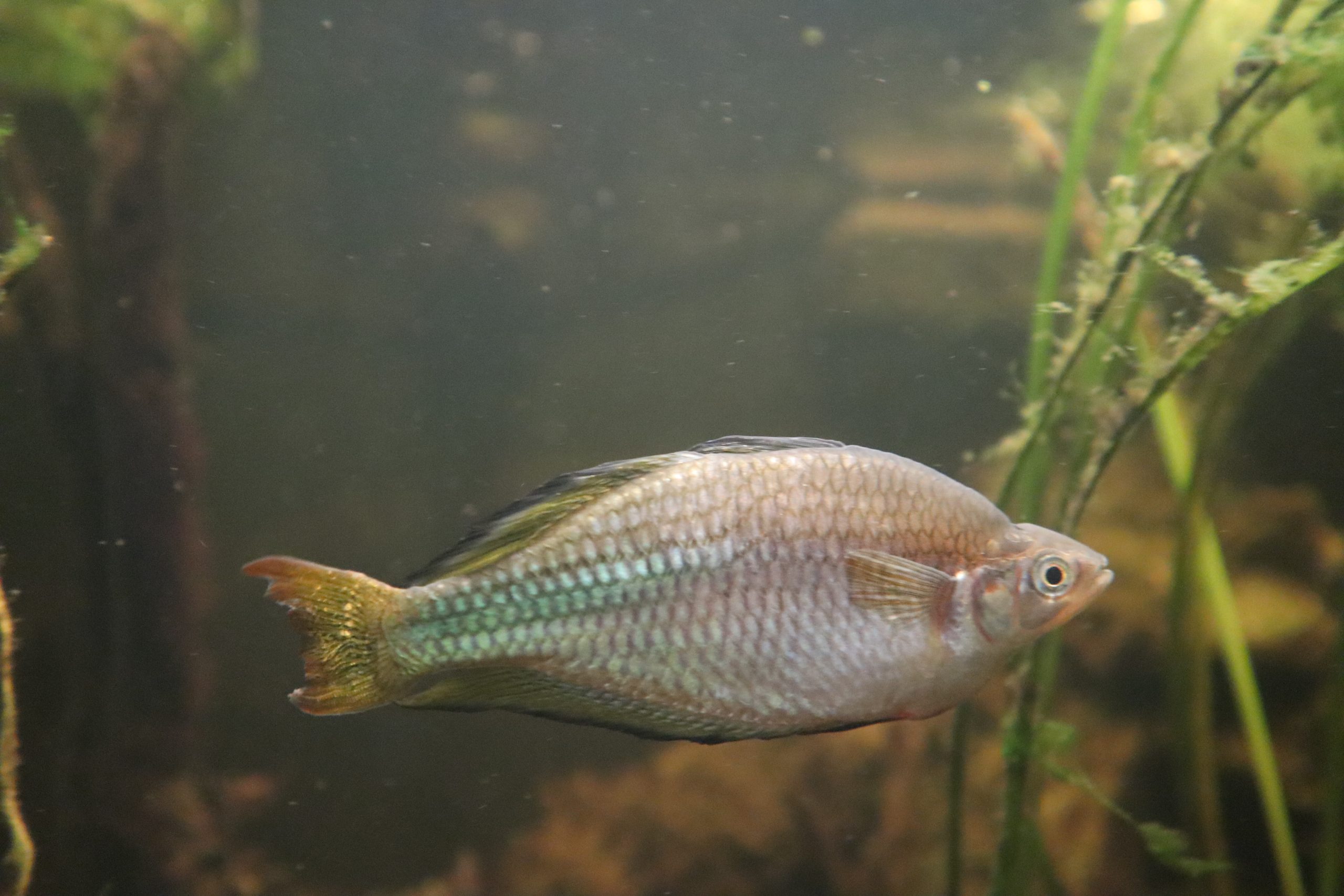
Murray darling rainbowfish
Melanotaenia fluviatilis
Murray darling rainbowfish grow to a maximum size of 11cm but are usually seen at around 8cm in length. They form schools in slow-flowing freshwater rivers, wetlands and billabongs and are often found amongst emergent vegetation like rushes. These are the southernmost of our mainly tropical rainbowfish, and they have adapted to our low winter temperatures, with the Campaspe and Goulburn rivers in Victoria representing the southern distribution limit.
Rainbowfish take their name from the bright rainbow colours many exhibit, especially when they are breeding. They feed on aquatic and terrestrial invertebrates and some types of filamentous algae.
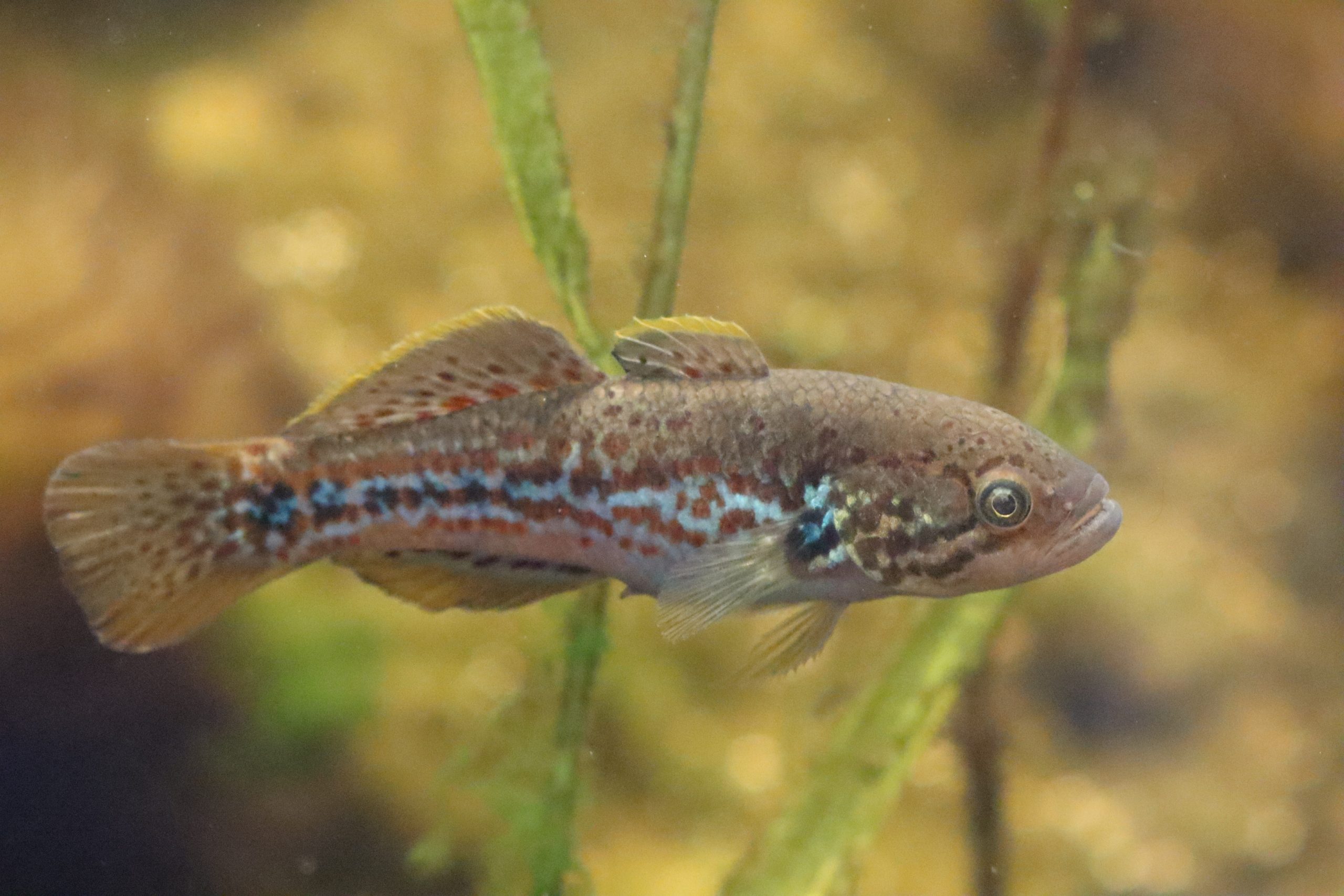
Southern Purple-Spotted Gudgeon
Mogurnda adspersa
Southern purple-spotted gudgeon grow to around 12 cm and prefer slow flowing or still waters with undercut banks, aquatic plants and rocks or logs on which to lay their eggs, which the males guard until they hatch. Mainly bottom dwellers, these gudgeons are ambush predators, lying motionless in wait until suitable prey such aquatic insects and macroinvertebrates come within reach.
Once common right through the Murray Darling Basin they were thought to be locally extinct in Victoria, until their recent rediscovery near Kerang. A well-orchestrated conservation project has now seen these fish bred in captivity and the young fish already released back into the wild in several locations in northern Victoria.
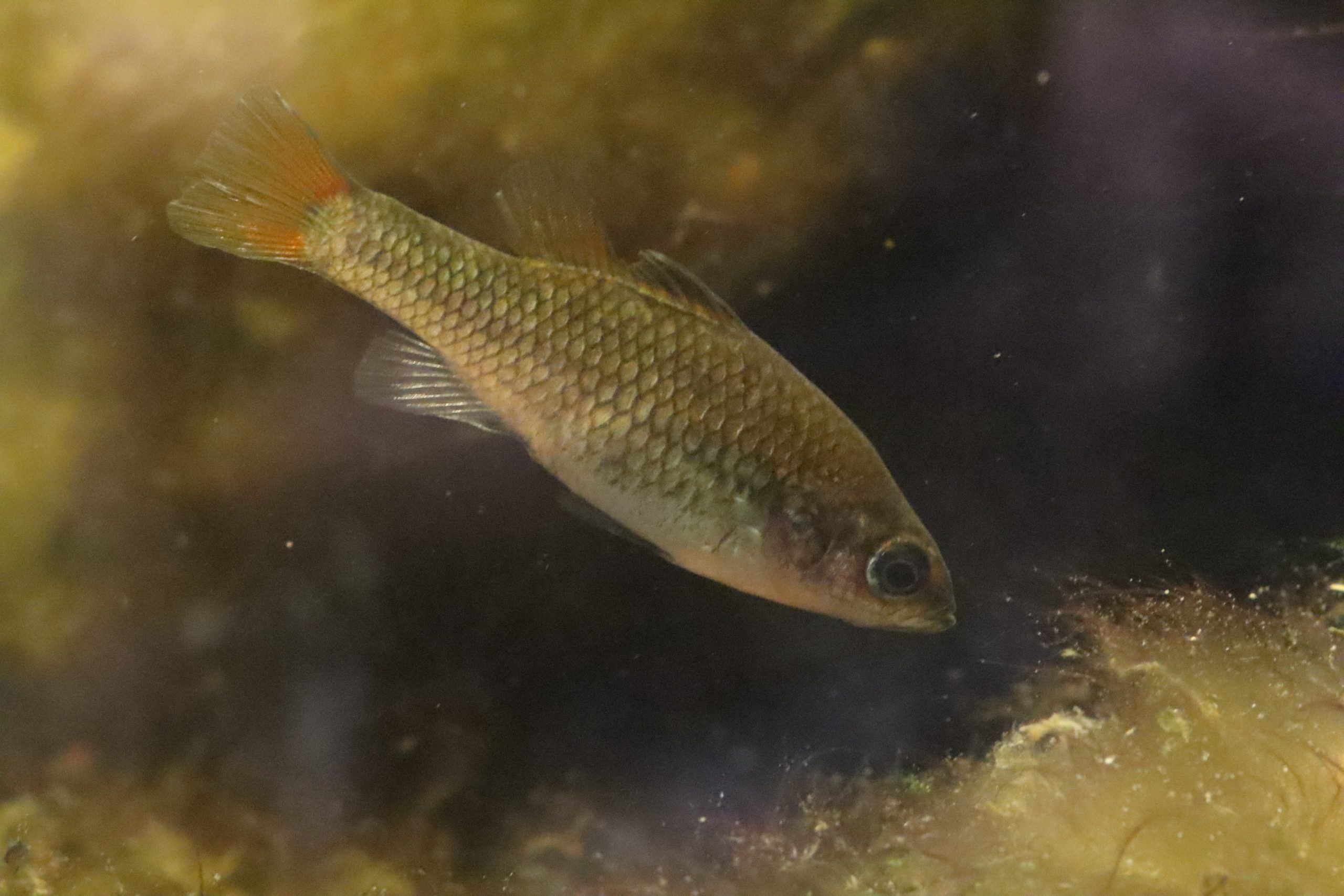
Southern Pygmy Perch
Nannoperca australis
Southern pygmy perch grow to about 8cm and prefer slow flowing or still waters with lots of dense aquatic vegetation. They feed on small aquatic insect larvae and other macro-invertebrates.
Once widespread in the Murray and lower Murrumbidgee catchments, Southern pygmy perch have now disappeared from most locations in NSW. Although still common in southern (coastal) Victoria, their distribution is patchy along the Victorian tributaries of the Murray. Habitat alteration, predation from trout and redfin perch, and competition for food from gambusia, are thought to have played a role in the decline of this species.
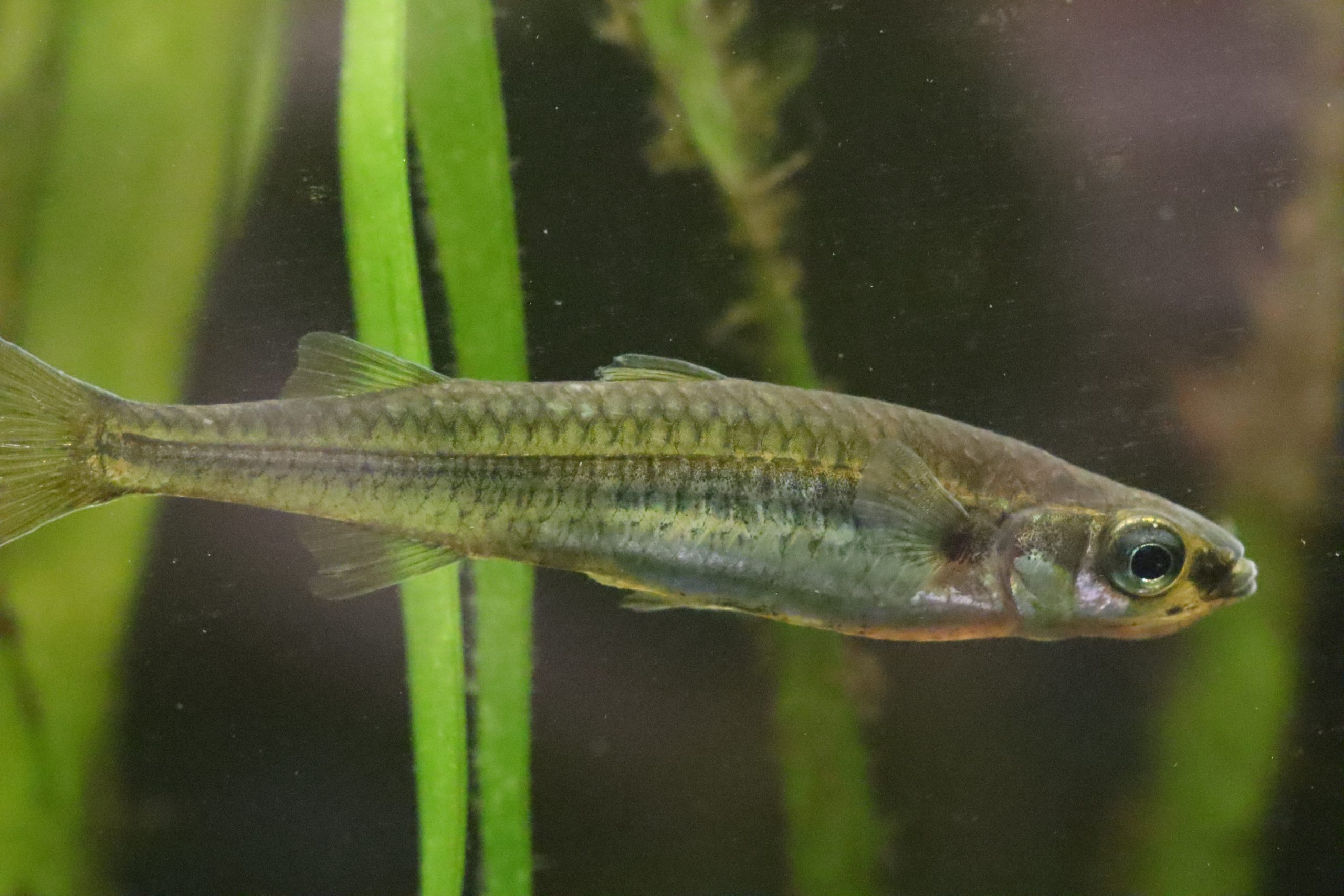
Unspecked Hardyhead
Craterocephalus fulvus
Unspecked Hardyhead grow up to around 10cm and occur throughout most of the Murray-Darling system. Once abundant, they have suffered a significant reduction in distribution and are now considered rare in the southern part of their range. They can be found around the margins of large, slow-flowing, low-land rivers, and in lakes, backwaters and billabongs. They prefer slow-flowing or still habitats with aquatic vegetation and sand, gravel or mud substrates.
They feed on small insects such as mosquito larvae, and micro-crustaceans. In turn, they are eaten by birds and larger fish such as Golden Perch.
Physical barriers that impede upstream migration, increased salinity effecting macro-invertebrate and aquatic vegetation, habitat degradation, cold water pollution and the impacts of feral fish species have all contributed to the decline of this species from its former range and population size.
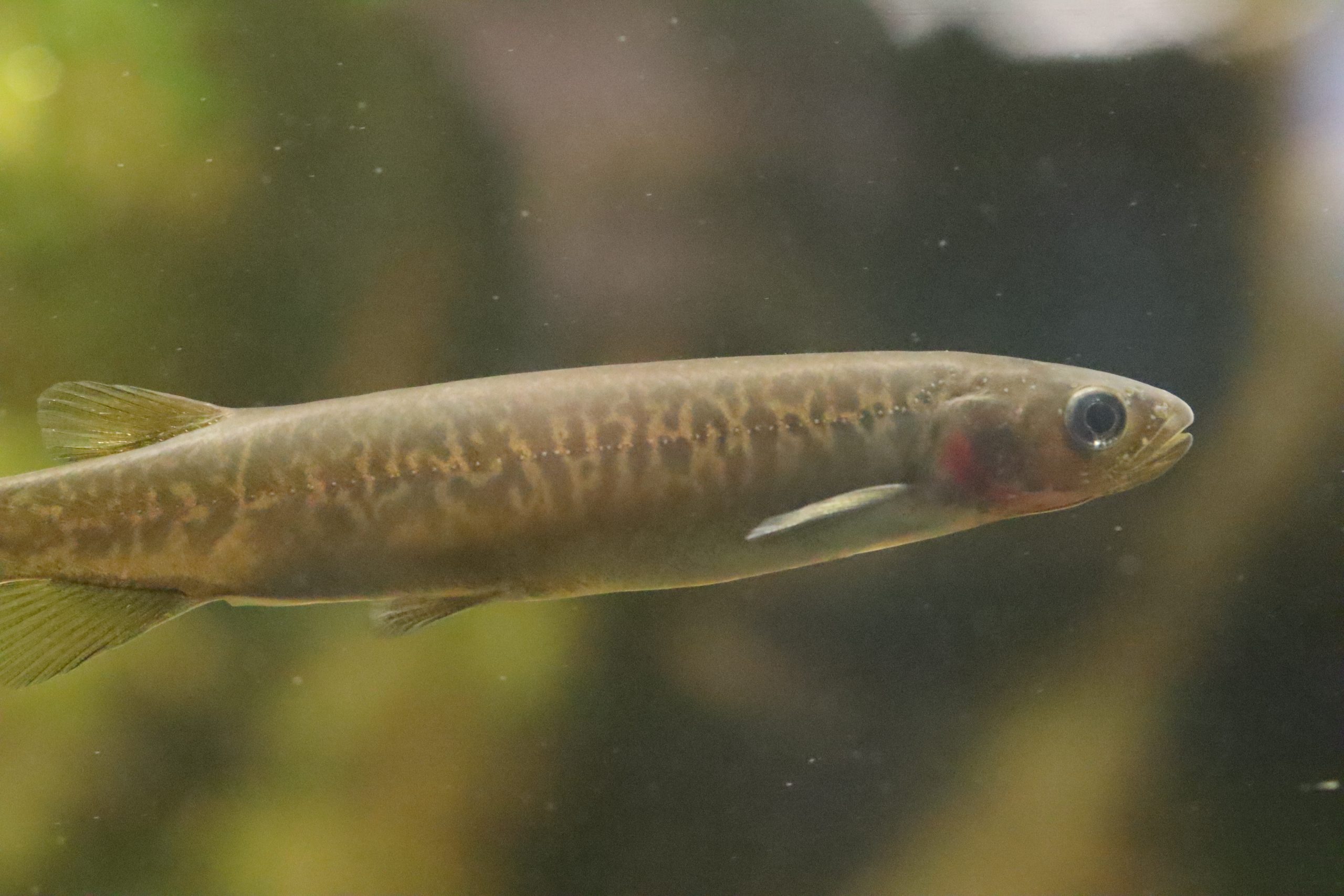
Obscure Galaxias
Galaxias oliros
Galaxiids are a group of small scaleless native fish found in south-eastern Australia. The Obscure Galaxias is our local species here in Bendigo and grows up to 13 cm. It can be found in a variety of habitats from sea level up to 600m elevation. Their distribution includes the Murray River system in Victoria and southern New South Wales as well as south of the Great Dividing Range in western Victoria. Obscure Galaxias inhabit a diverse variety of habitat types including rivers, fast flowing creeks, billabongs and swamps. They can be found in both clear and turbid waters.
Introduced predatory fish such as trout and redfin have had a devastating impact on many of our galaxiid species.
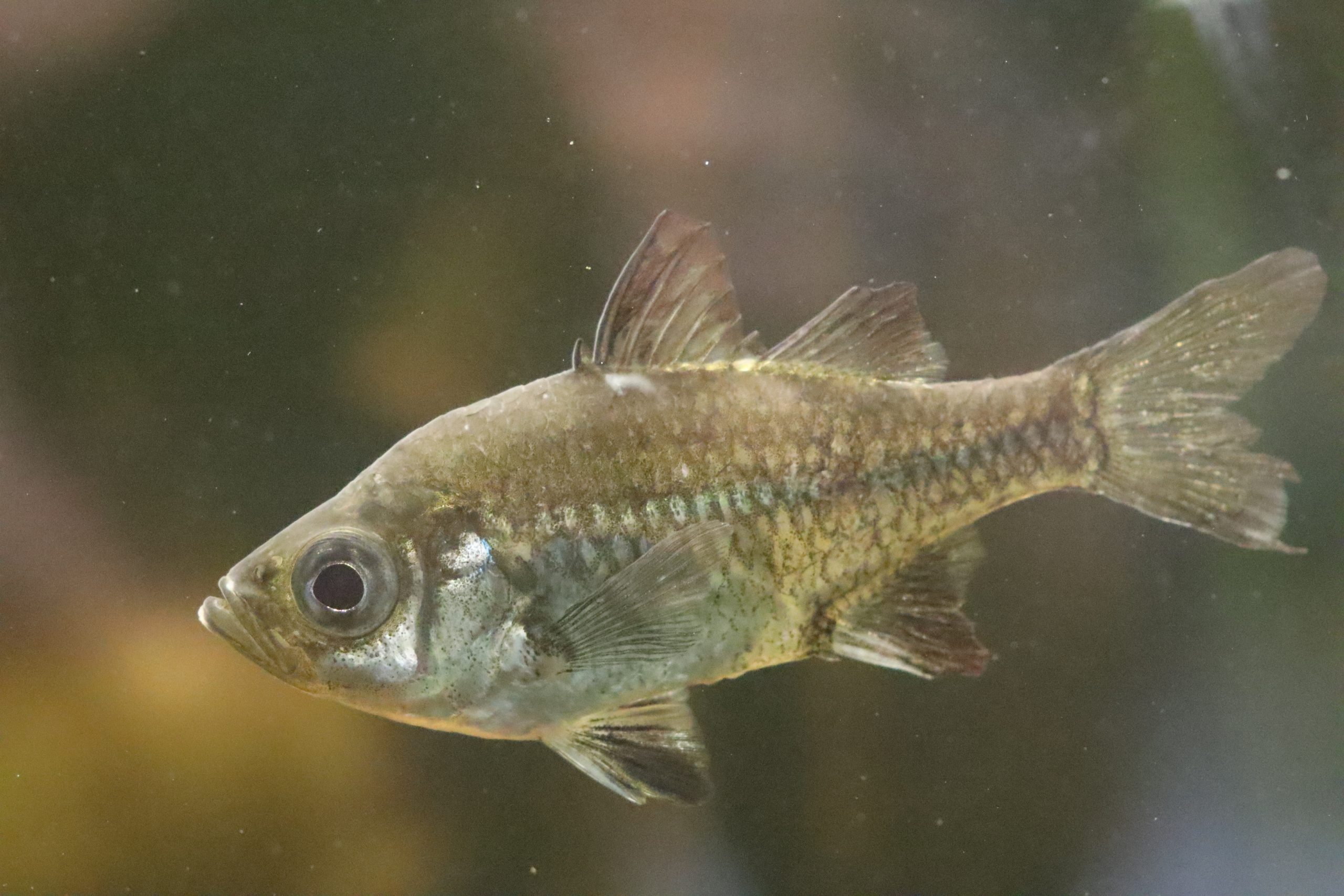
Olive Perchlet
Ambassis agasizii
Olive Perchlet grow to around 7 cm and occur in a variety of habitats in the Murray Darling Basin but are thought to be locally extinct in Victoria and South Australia. They prefer the vegetated edges of lakes, creeks, swamps, wetlands and rivers and are often associated with woody habitat and aquatic vegetation in areas with little or no flow, particularly backwaters. They form almost stationary, small schools during daylight hours in areas close to instream cover, which disperse during darkness.
Olive Perchlet are carnivorous, eating a range of microcrustaceans, aquatic and terrestrial insects including mosquito wrigglers and small arachnids and, occasionally, small fish.
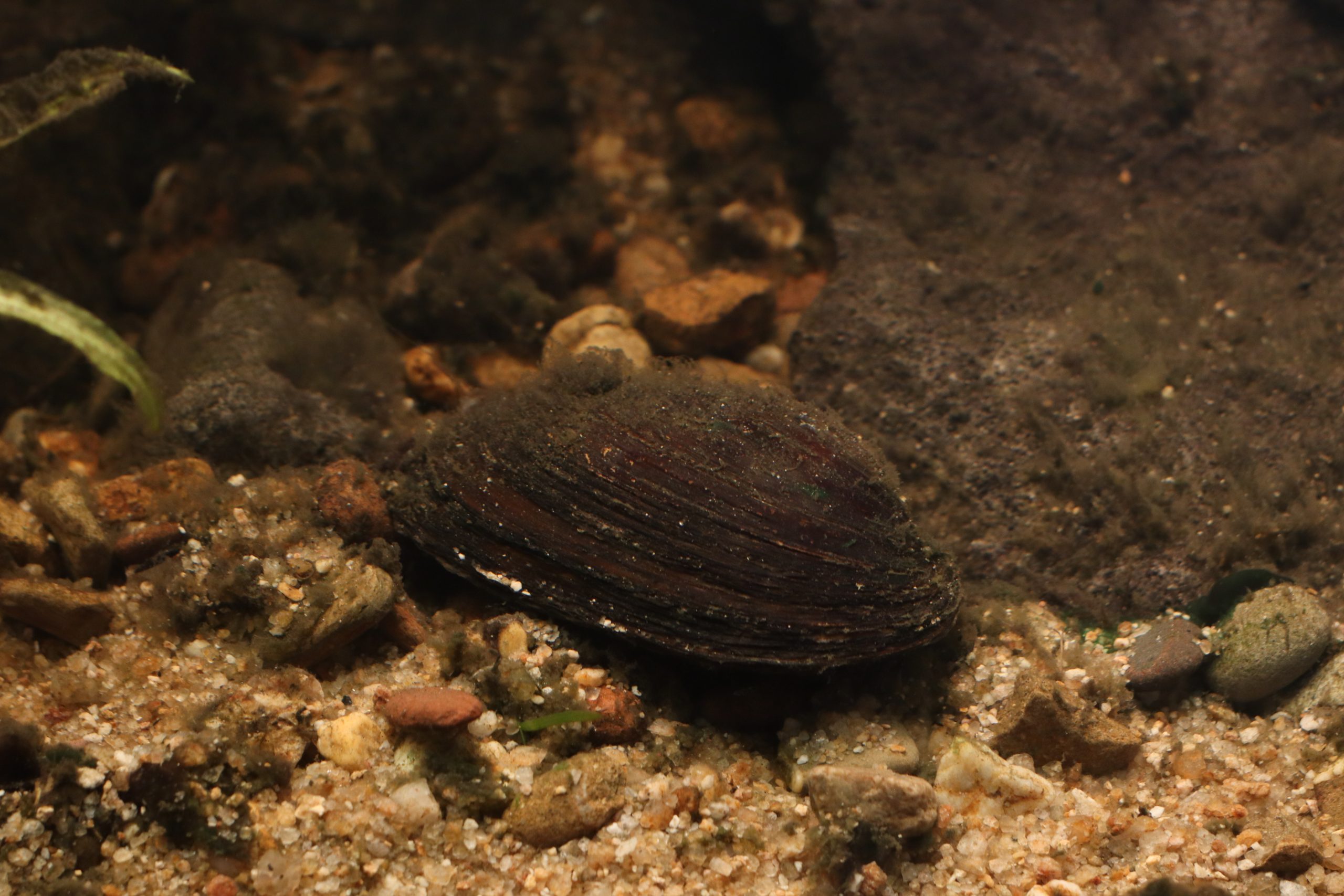
Freshwater Mussel
Alathyria spp
Freshwater mussels are the ecosystem engineers of our waterways; they modify substrates by burrowing, improve water quality by filtration, provide food for other organisms and play a significant role in the cycling of nutrients.
Early explorers of the inland referred to the abundance of mussels in their diaries and journals, where they also noted the importance of river mussels as food for local Aboriginal people as evidenced by shell middens on river banks. Their shells were also used for making fish hooks and cutting implements.
The disappearance of freshwater mussels from our waterways is most concerning and reminiscent of the proverbial ‘canary in the coal mine’ scenario.
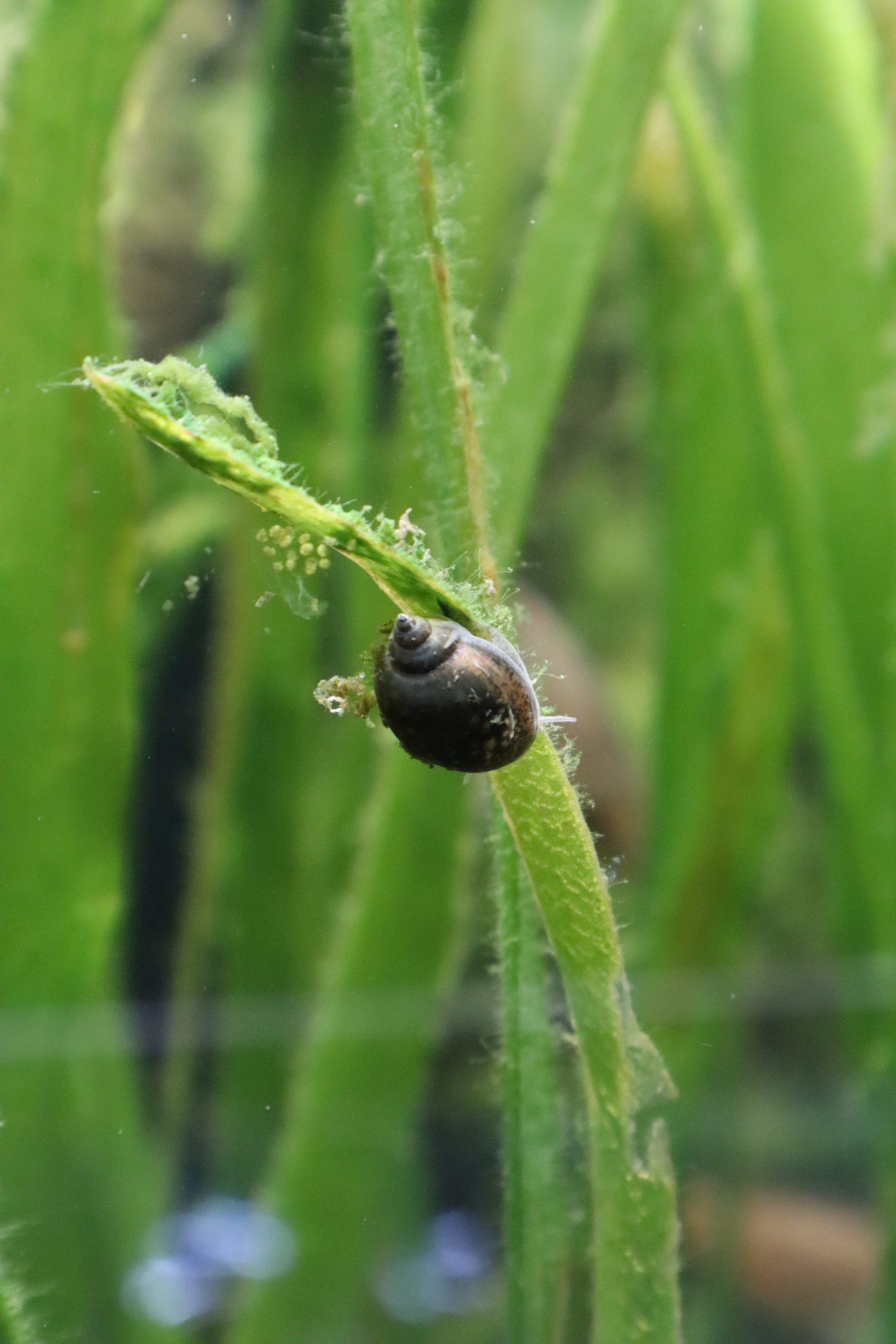
Freshwater Snail
Freshwater snails help maintain a healthy and balanced aquarium ecosystem.
They feed on algae that accumulates on rocks, plants and the tank walls, and they contribute to the cleanliness of the aquarium by consuming uneaten food, dead plant matter and other debris. They also aerate the substrate, promoting beneficial bacteria and improving overall water quality.
